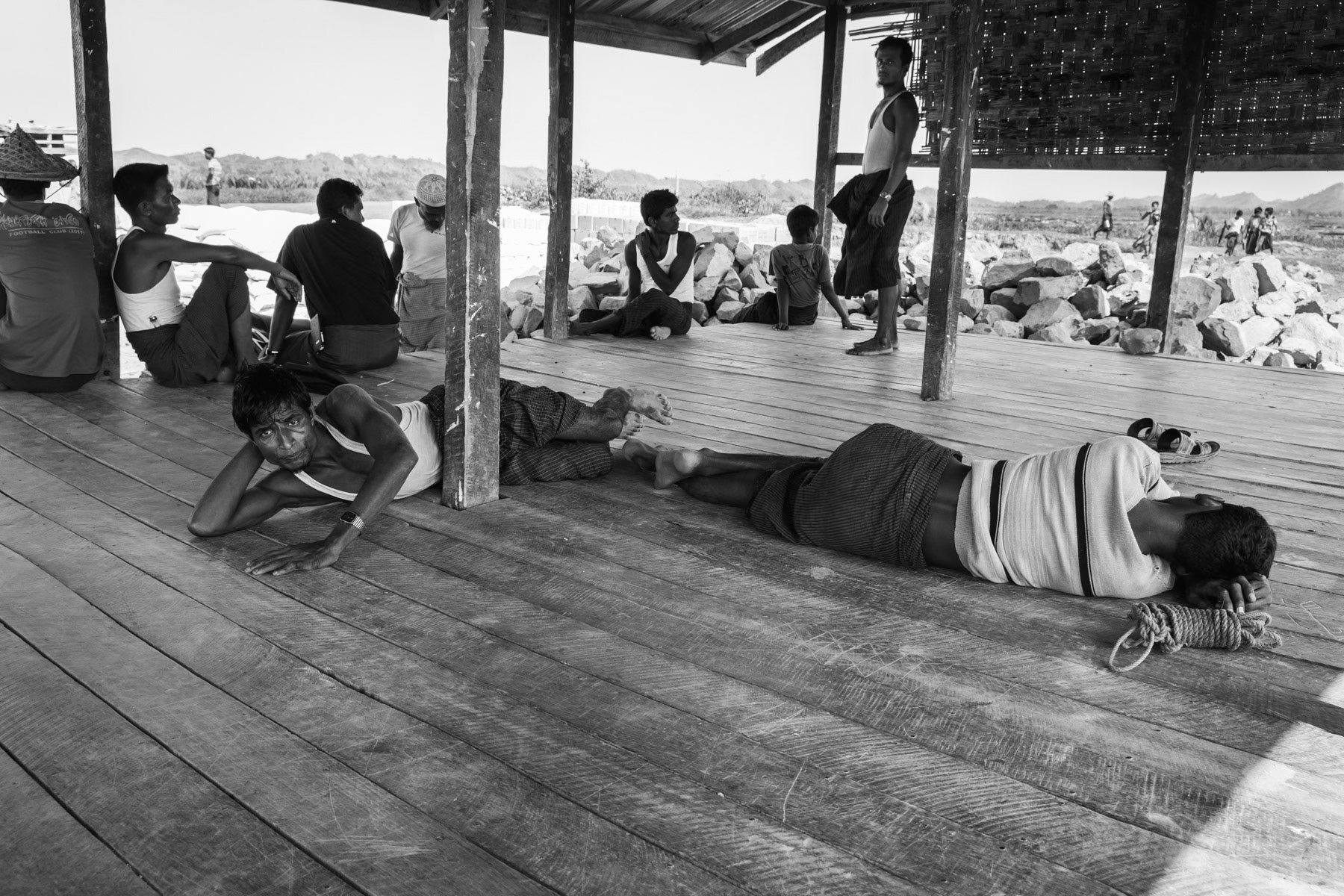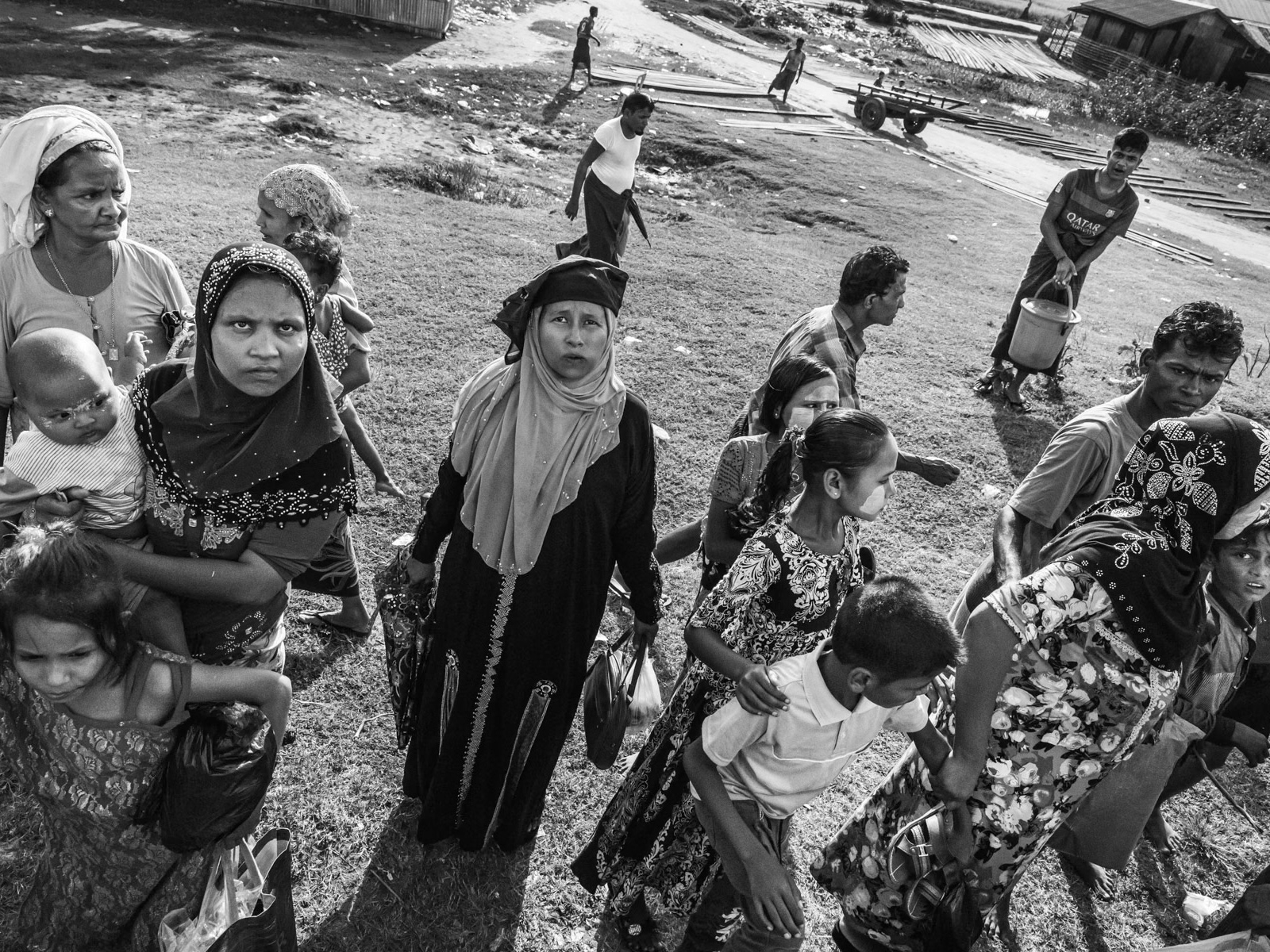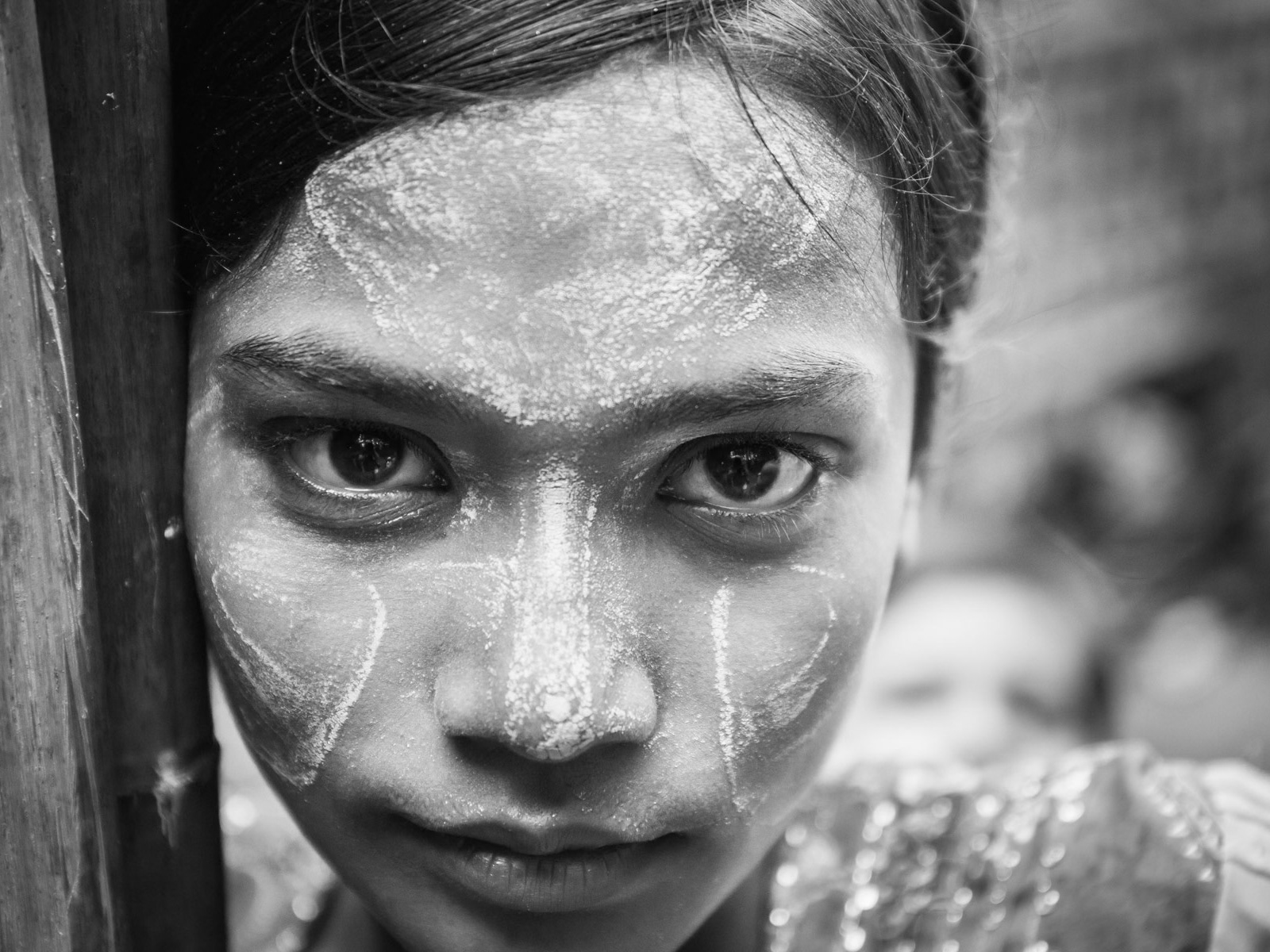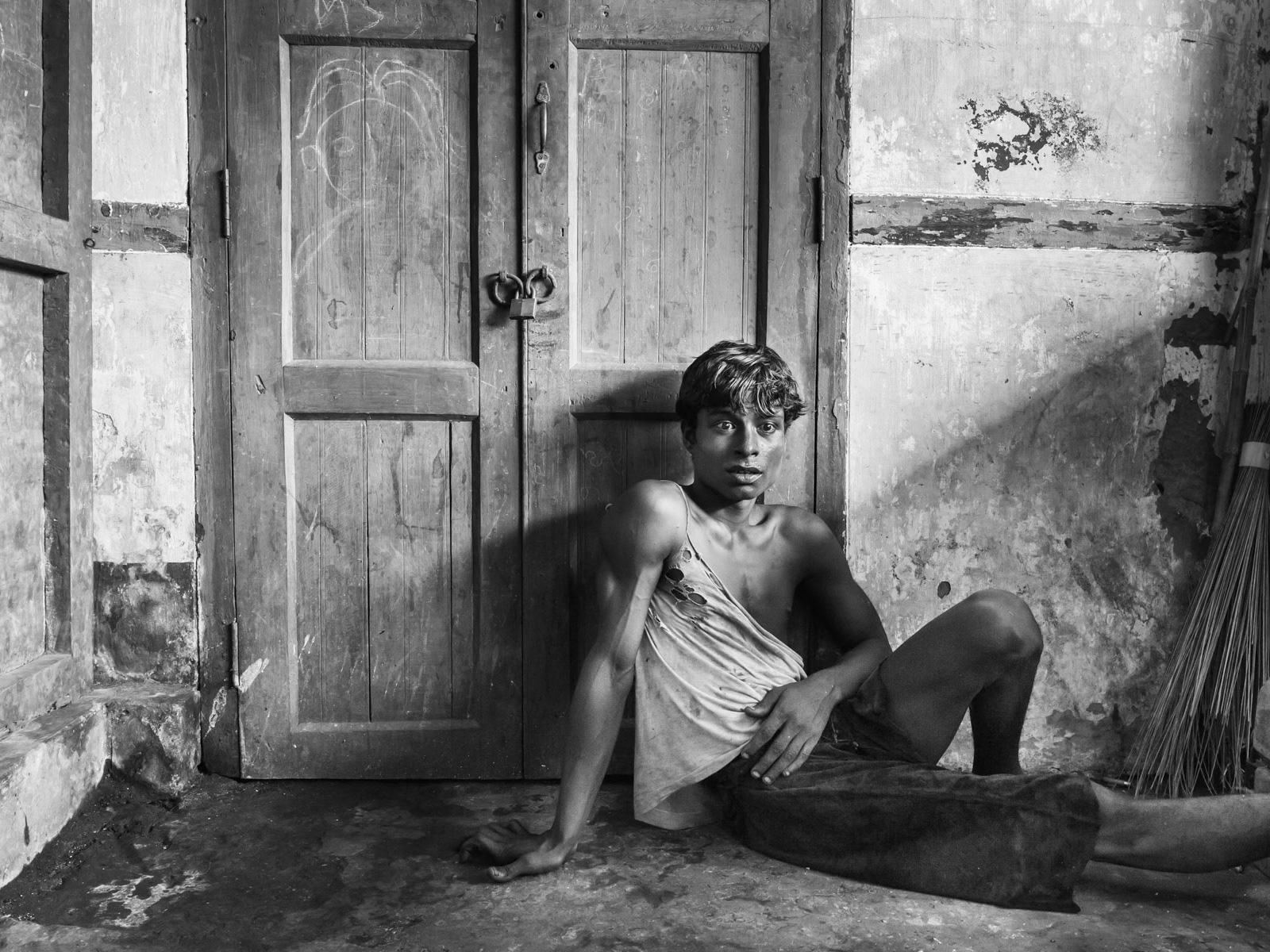In 2015, the situation for the Rohingya population in Rakhine, Myanmar, was dire. Since 2012, they had been forcibly confined to Internally Displaced Persons (IDP) camps near Sittwe, which resembled open-air prisons. These camps were overcrowded, lacked basic services, and were heavily policed, leaving residents in a constant state of insecurity. The Rohingya were deprived of freedom of movement, unable to leave the camps for work, healthcare, or education without permission. Aung Mingalar, a predominantly Rohingya neighborhood in Sittwe, had also been completely sealed off, transforming into a ghetto. Residents faced severe restrictions, with access to essential services like hospitals controlled by police. Any attempt to leave required bribes that many could not afford or was met with heavy police escorts. The international community condemned these conditions as human rights violations, but little was done to improve the situation, leaving the Rohingya in a state of severe isolation and deprivation.
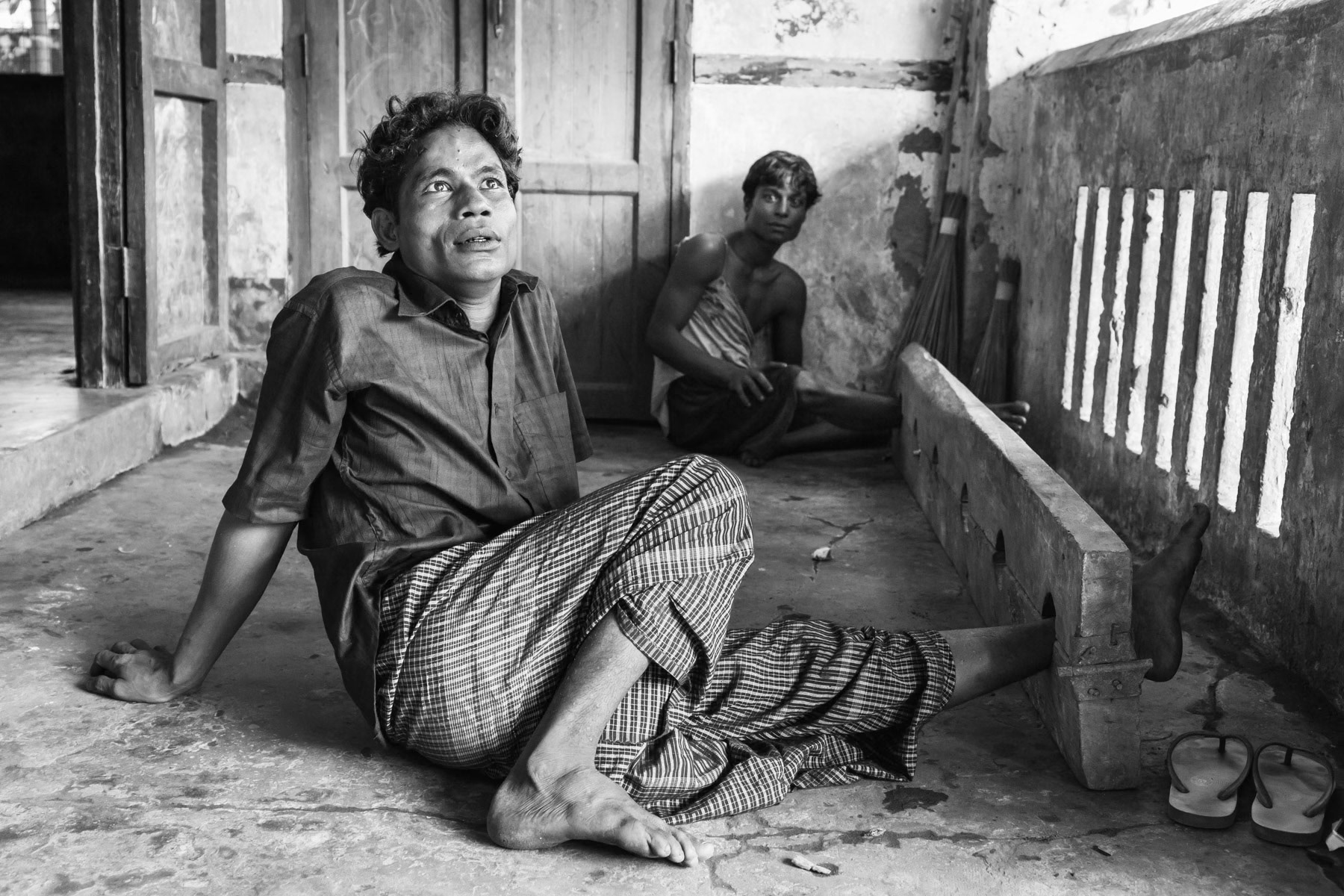
Locked up Rohingya near a military check point, Aung Mingalar, Sittwe, Myanmar, September 2015

Moving humanitarian supplies through the only available access road to the camp where 8,000 forcibly displaced Rohingya live. Humanitarian aid is the only livelyhood for the residents of the sealed off internment camps. Kyin Ni Pyin IDP camp near Paktauw in Rakhine State, Myanmar, May 2017
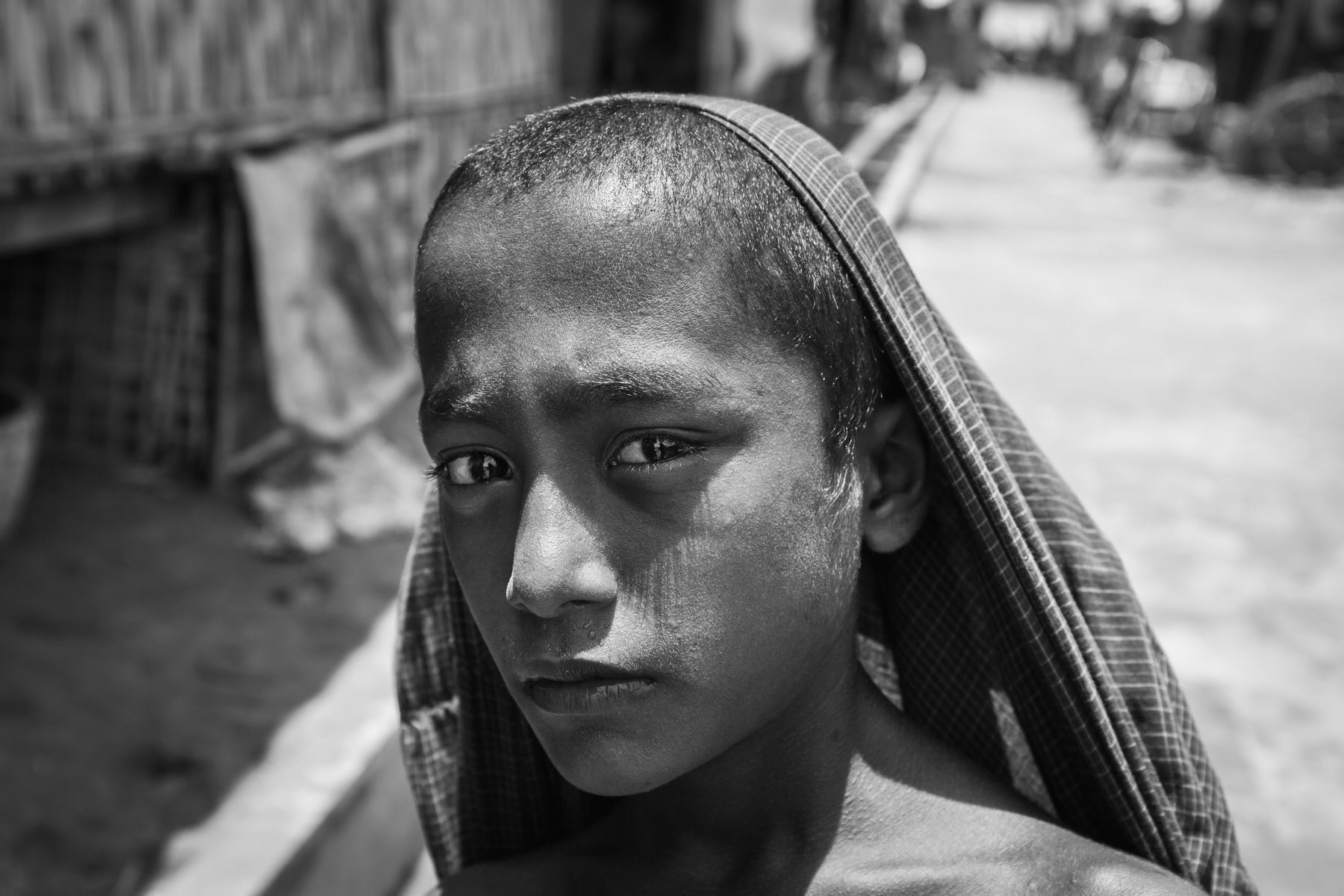
Dar Paing camp for Rohingya made stateless in their own country. Sittwe township, Rakhine, Myanmar, May 2016
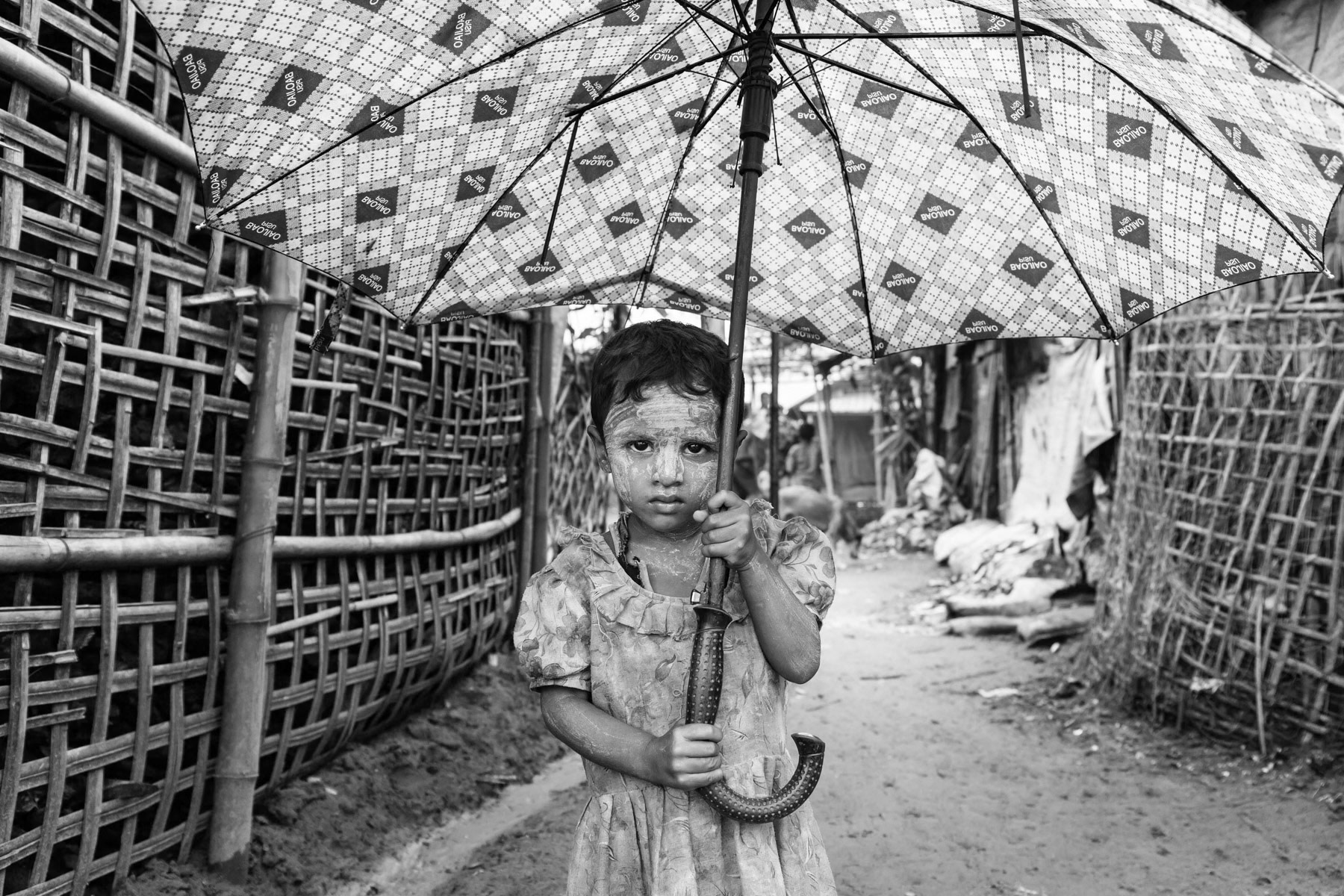
Rohingya girl in Dar Paing camp for internally displaced persons, Sittwe township, Myanmar, September 2015

Medressa in the mosque of Aung Mingalar in Sittwe, Arakan State, Myanmar, September 2015
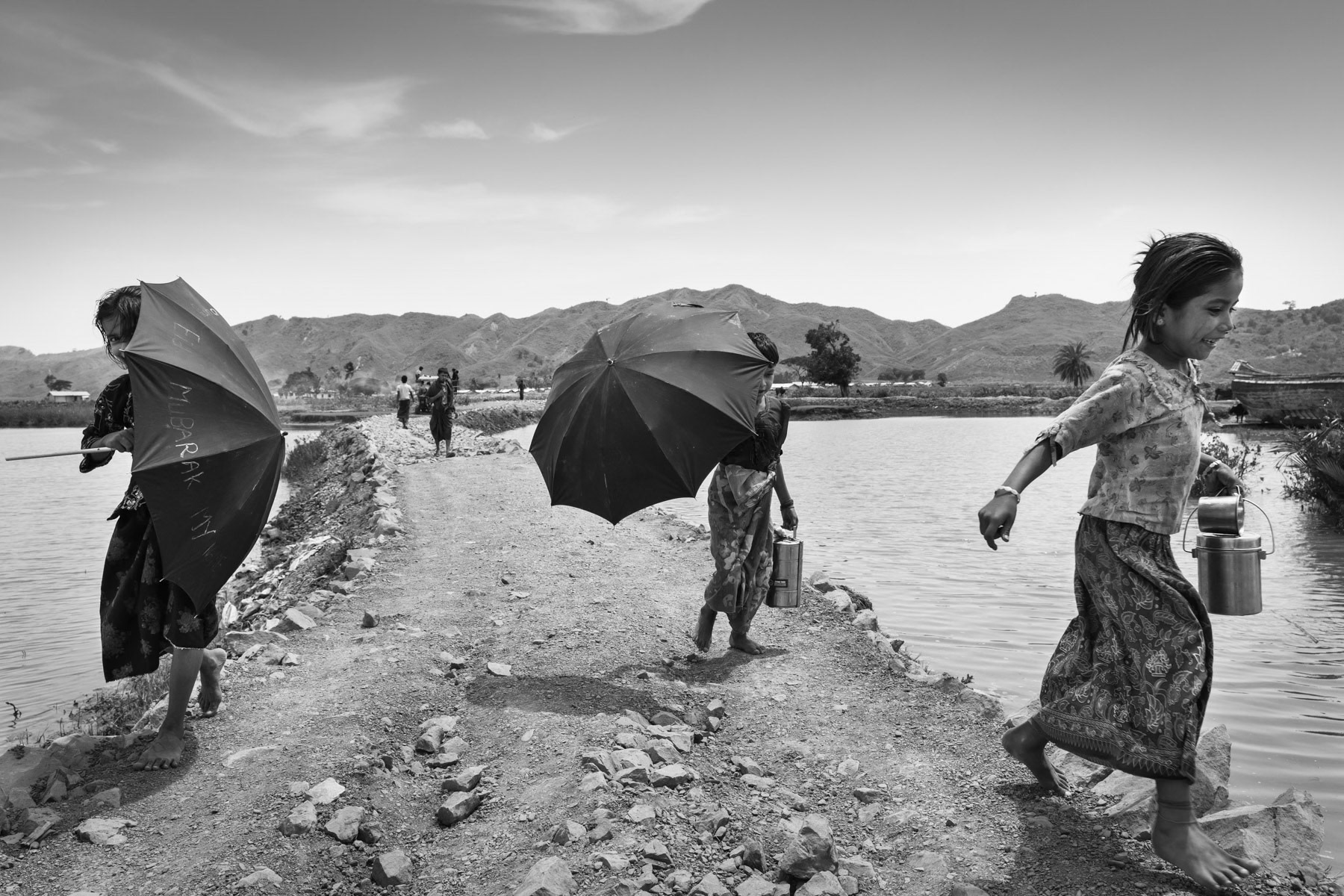
Rohingya children bringing lunch to the workers unloading a boat bringing humanitarian aid. Kyin Ni Pyin camp in Rakhine for internal displaced persons where a part of the Rohingya population has been forcibly moved since 2012. Paktauw, Myanmar, May 2017
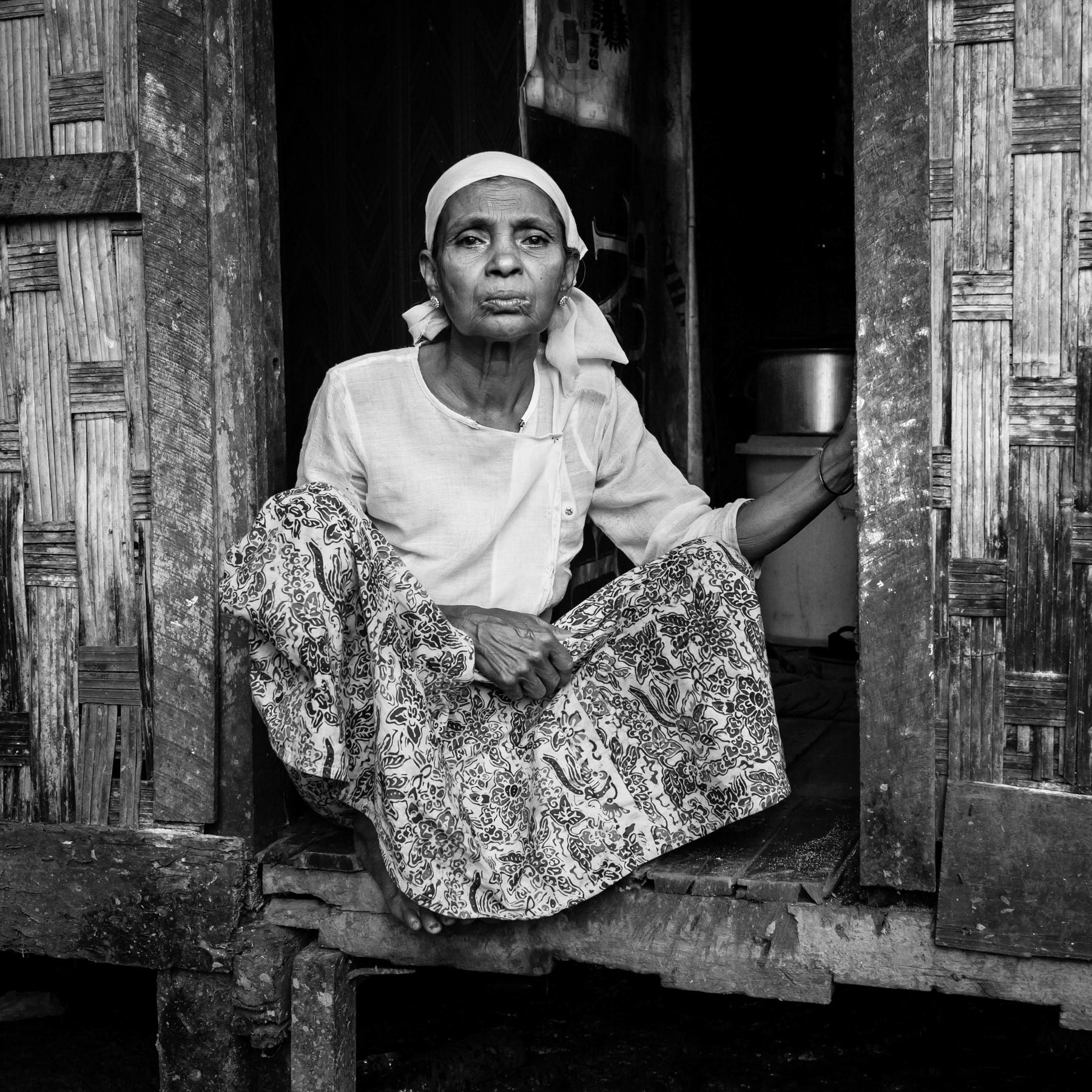
Rohingya resident of Aung Mingalar, confined to the limits of the neighbourhood without the possibility to use the services of the city of Sitwe, Myanmar, September 2015

Displaced Rohingya collecting water at one of the two ponds, the only source of drinking water for the camp population. Water supply for the 8,000 Rohingya is only through ponds. No tube wells because the soil is too rocky. Acute shortages of water during dry season. The unclean water is causing high levels of diarrhea and a breeding ground for mosquito's causing malaria and dengue fever. The closest hospital is in Sittwe requiring a police permission to go to, and takes several hours by boat. Kyin Ni Pyin IDP Camp near Paktauw, Myanmar, May 2017
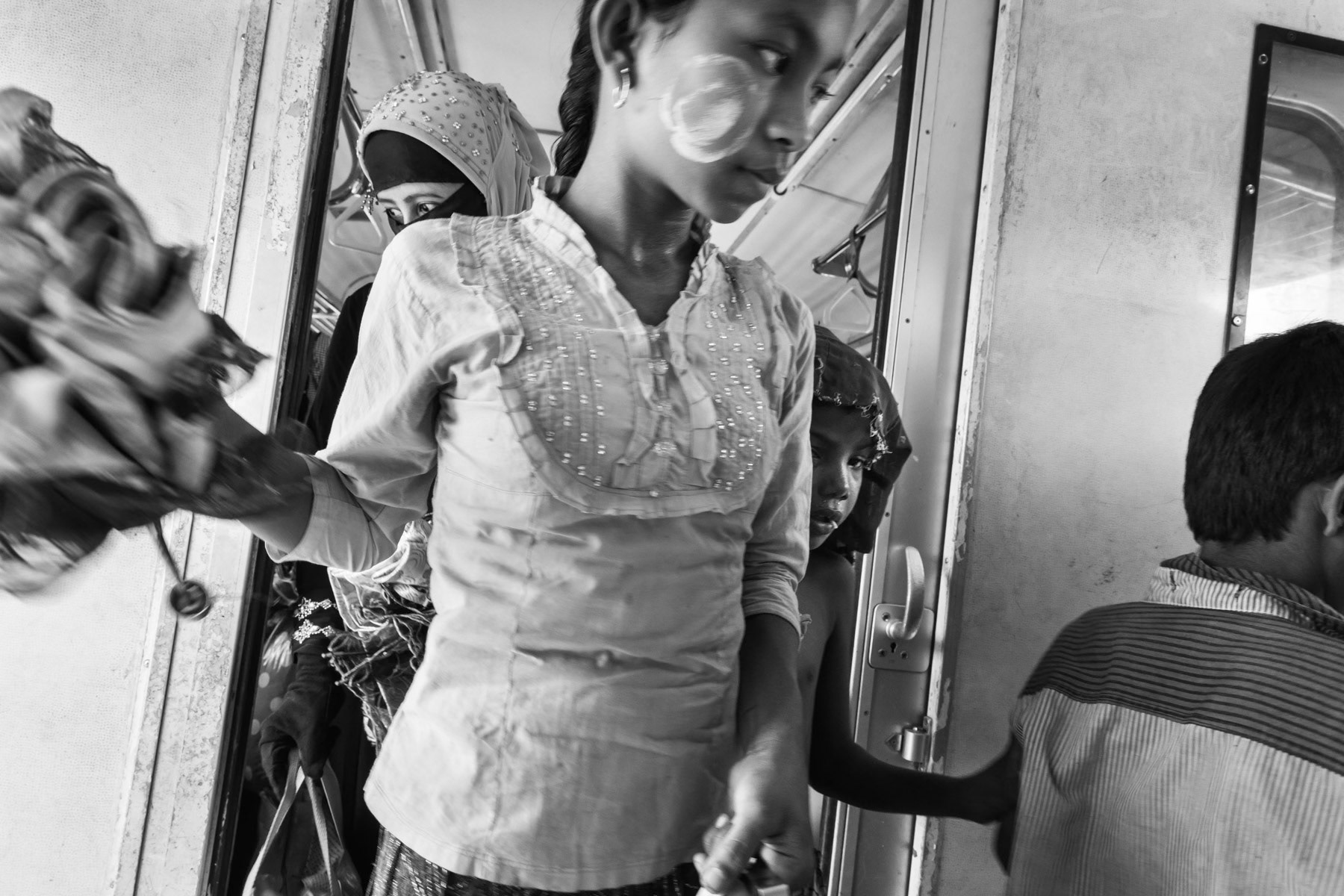
Rohingya minority allowed to travel on the local train between the IDP camps. They are not allowed to travel to Sittwe and the trains are guarded by heavily armed police forces. Sittwe township, Myanmar, May 2017
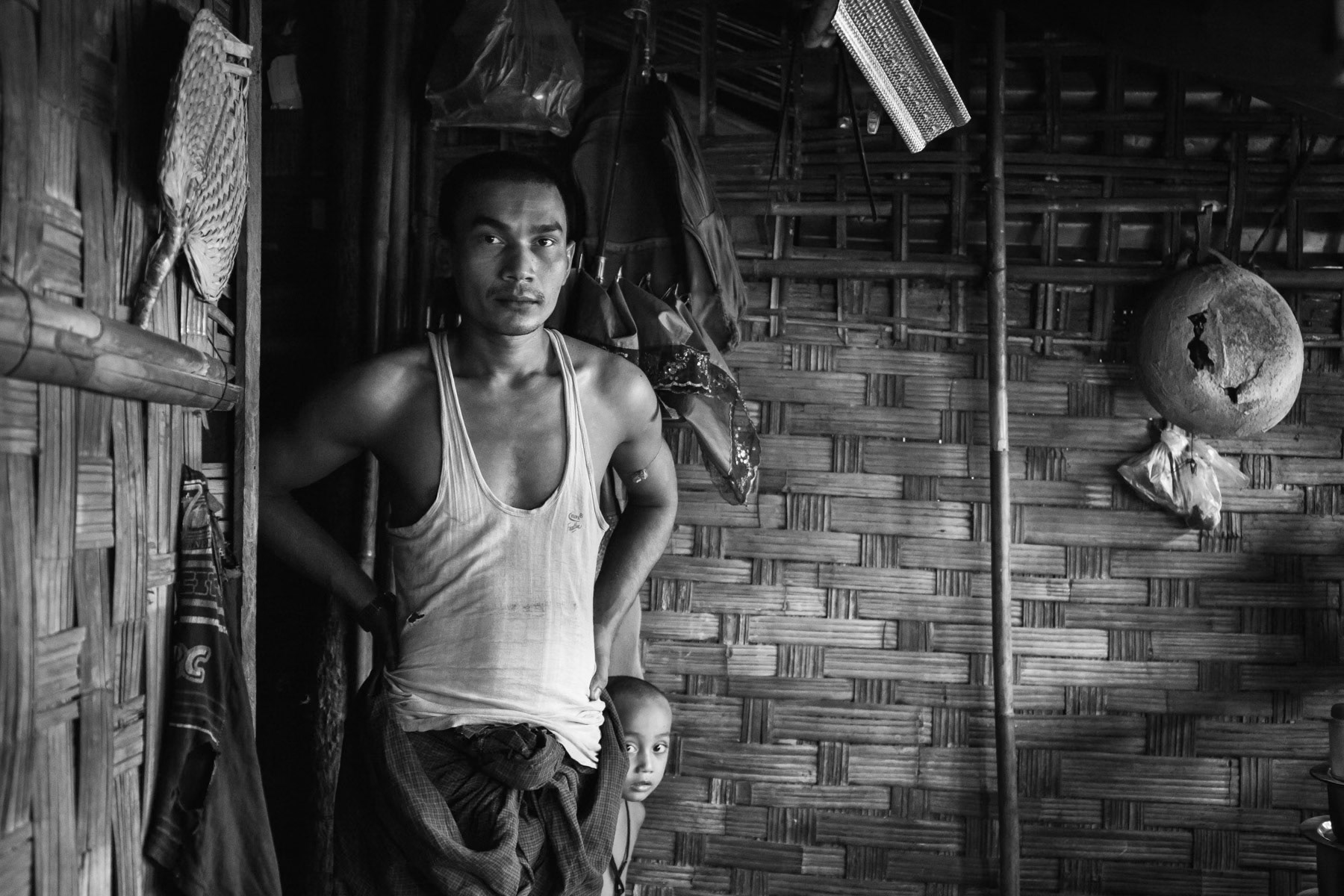
Shelters have a normal lifespan of 2-3 y, after nearly 4y of use, many have leaking roofs and collapsing floors reducing even further the living space. Dar Paing IDP camp for stateless Rohingya, Sittwe, Myanmar, May 2016
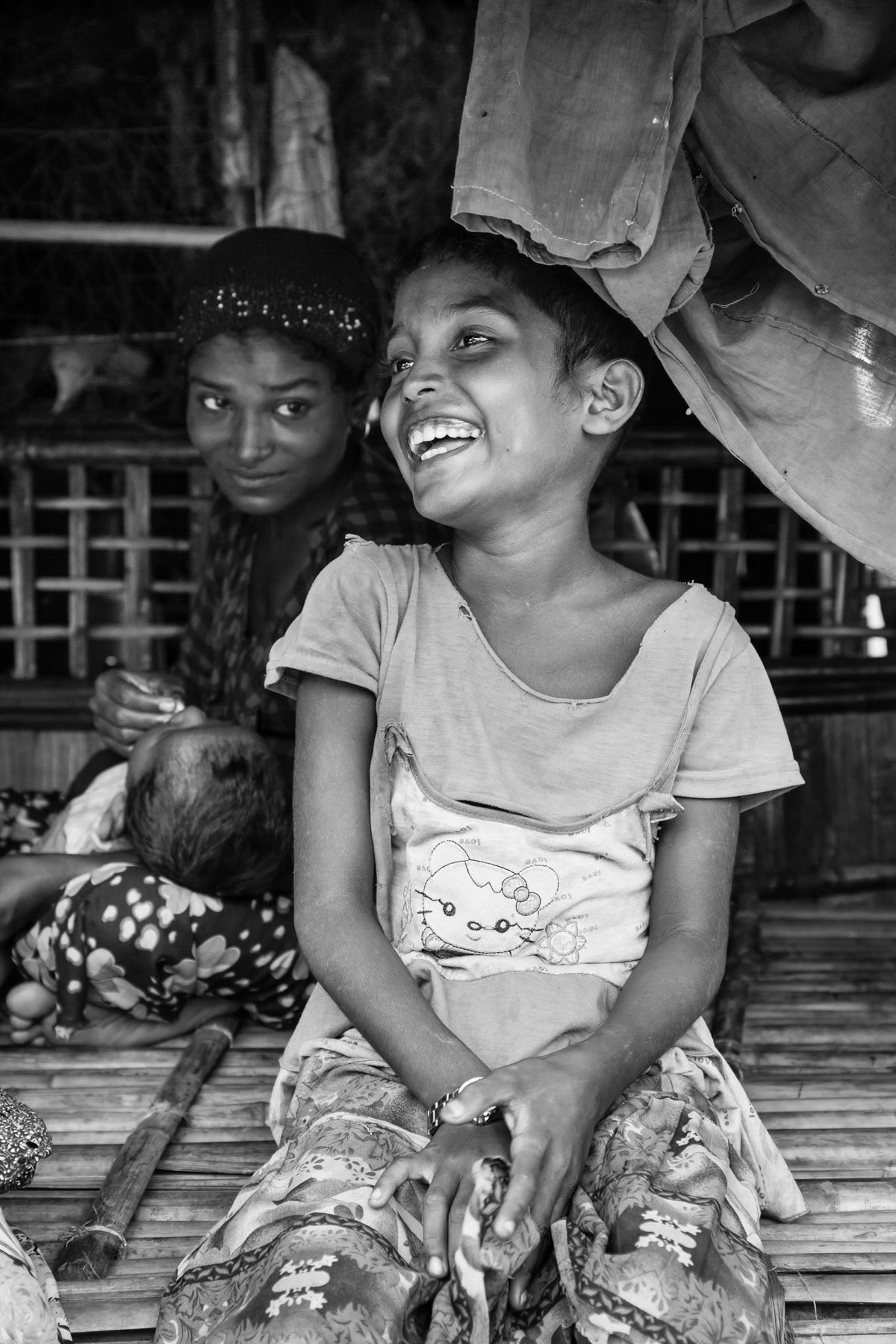
Dar Paing Rohingya camp, Sittwe, Myanmar, September 2015
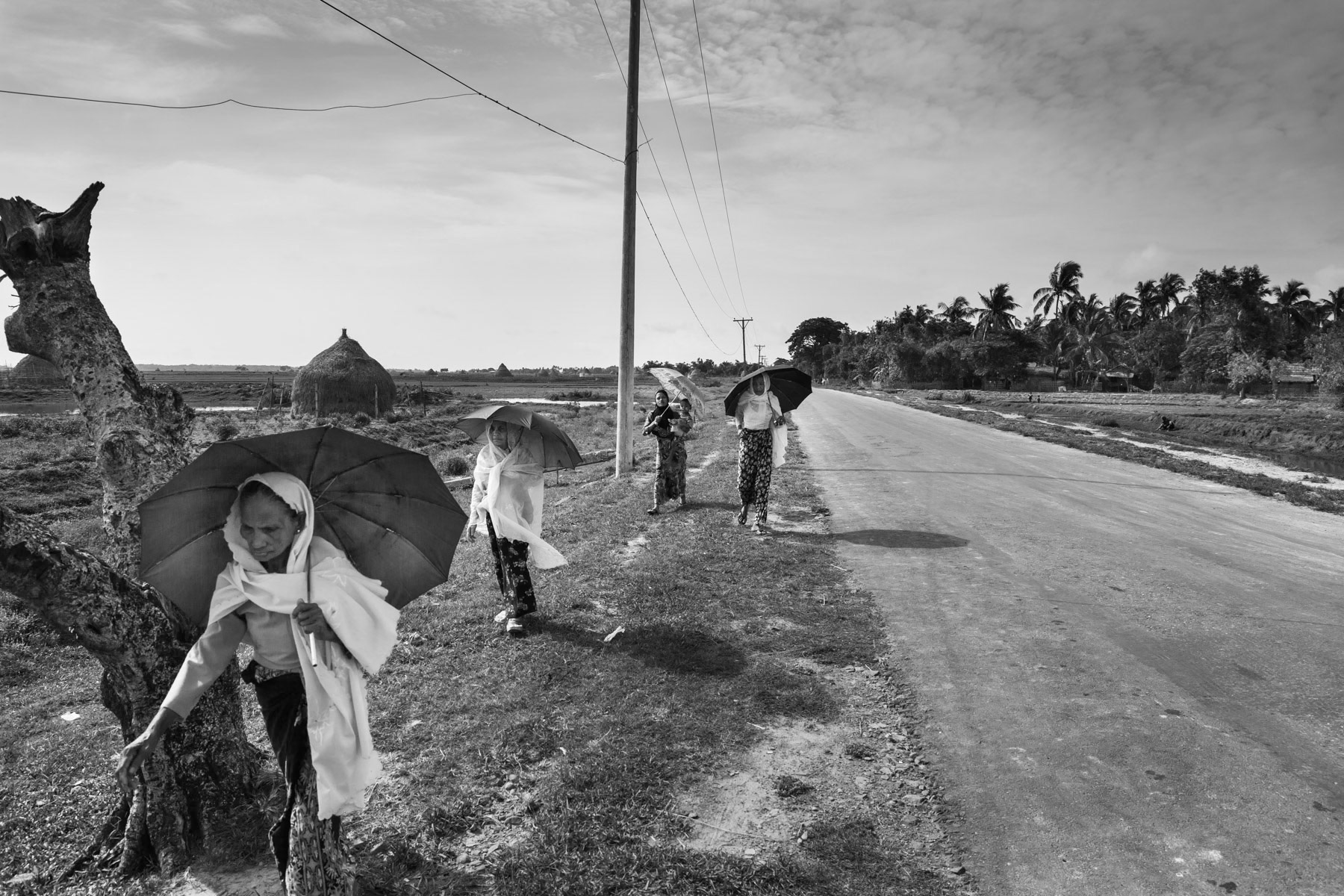
Rohingya women going to the trainstation. The train is the only public transport between Rohingya villages and the IDP camps north of Sittwe. Main road in Rashimi, Sittwe township, Myanmar, June 2016
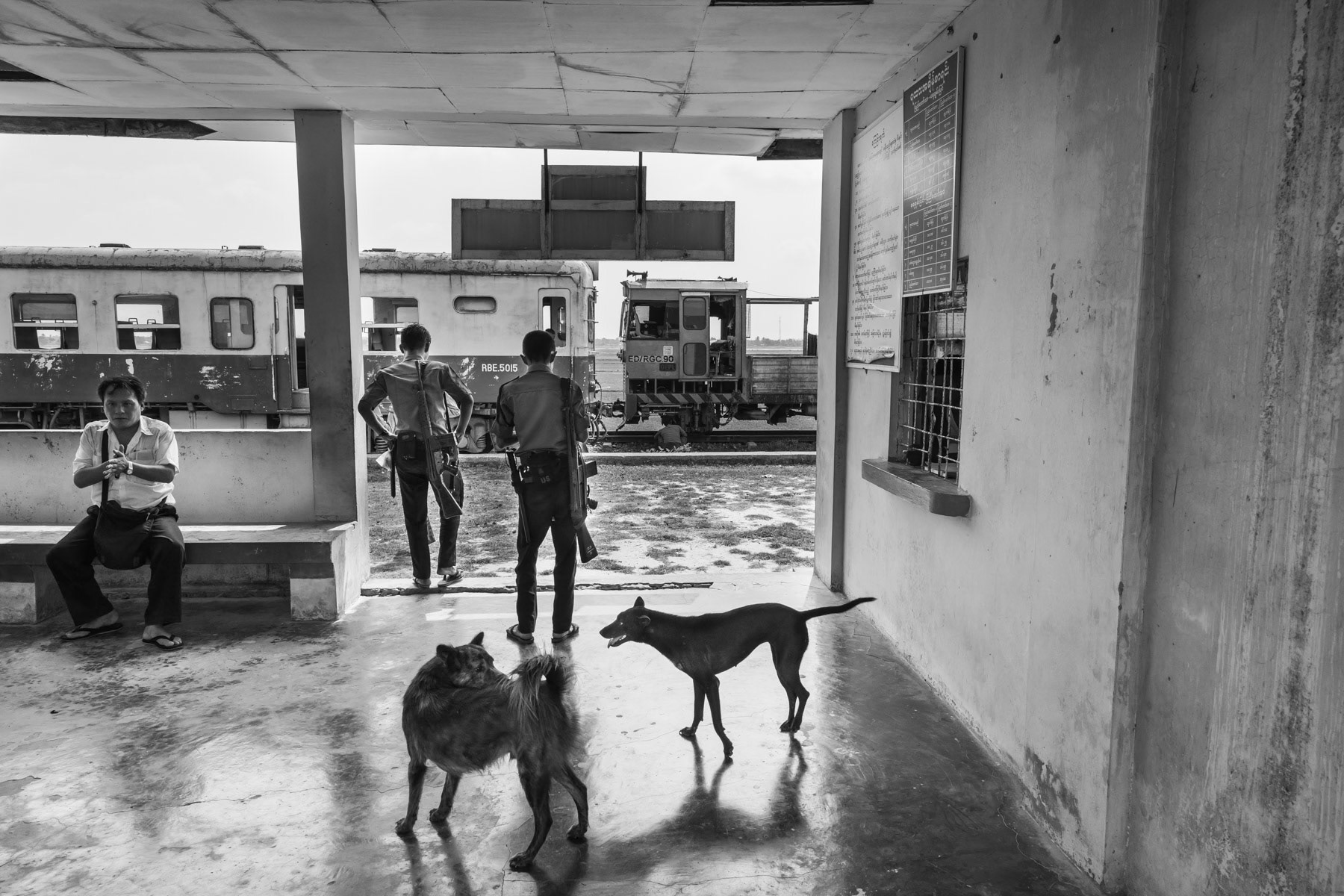
Local train that runs through the IDP camps in Sittwe township where the Rohingya population is only allowed in a segregated wagon guarded by heavily armed police. Sittwe township, Rakhine State in Myanmar, May 2017
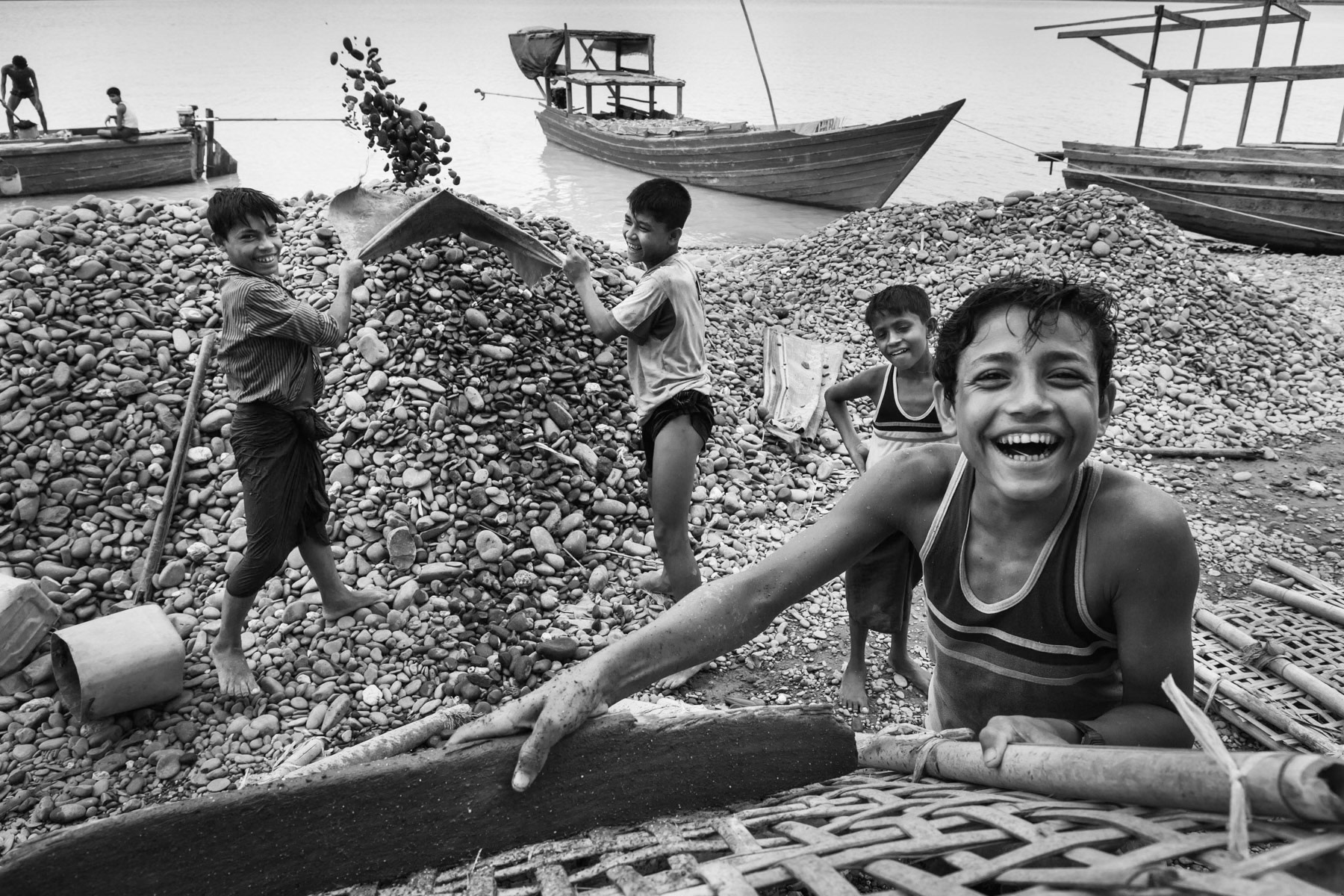
Rohingya children sorting river extracted stones used for the condtruction of a nearby airport. Nam-Kya village near Mrauk-Oo, Rakhine, Myanmar, May 2016

Cattle market accessible to Rohingya residents of the IDP camps. Pyin village, Sittwe township, Burma, May 2016

Disabled boy in Thau Chuang camp for displaced Rohingya, Sittwe, Myanmar, September 2015
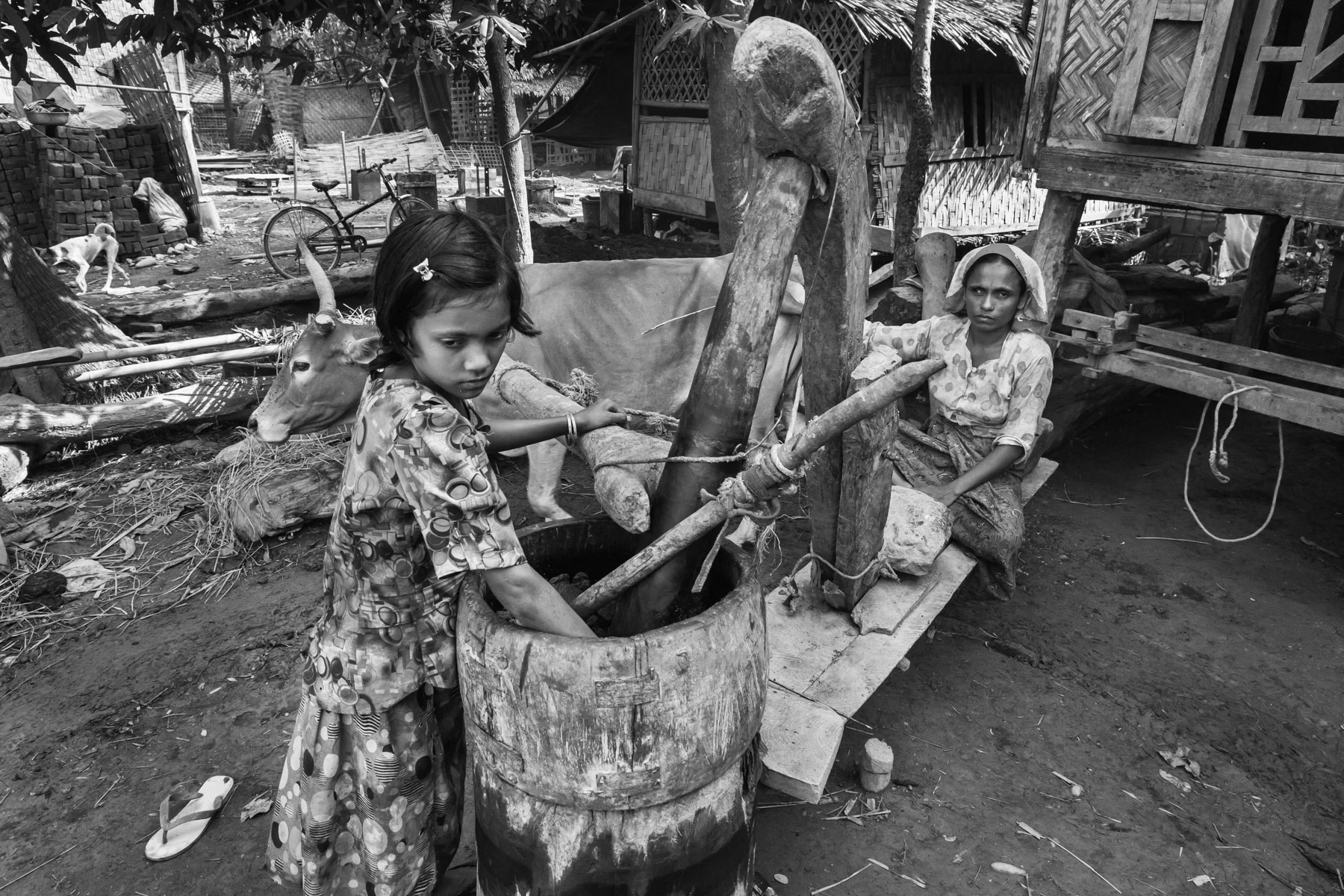
Rohingya villagers making oil from mustard seeds. Puangdok village, Mrauk-U, Rakhine, Myanmar, May 2016

A time for relaxation and sports, Motin Nya IDP camp for forcibly displaced Rohingya, Sittwe township, Myanmar, October 2016

Medressa in the mosque of Aung Mingalar in Sittwe, Arakan State in Myanmar, September 2015
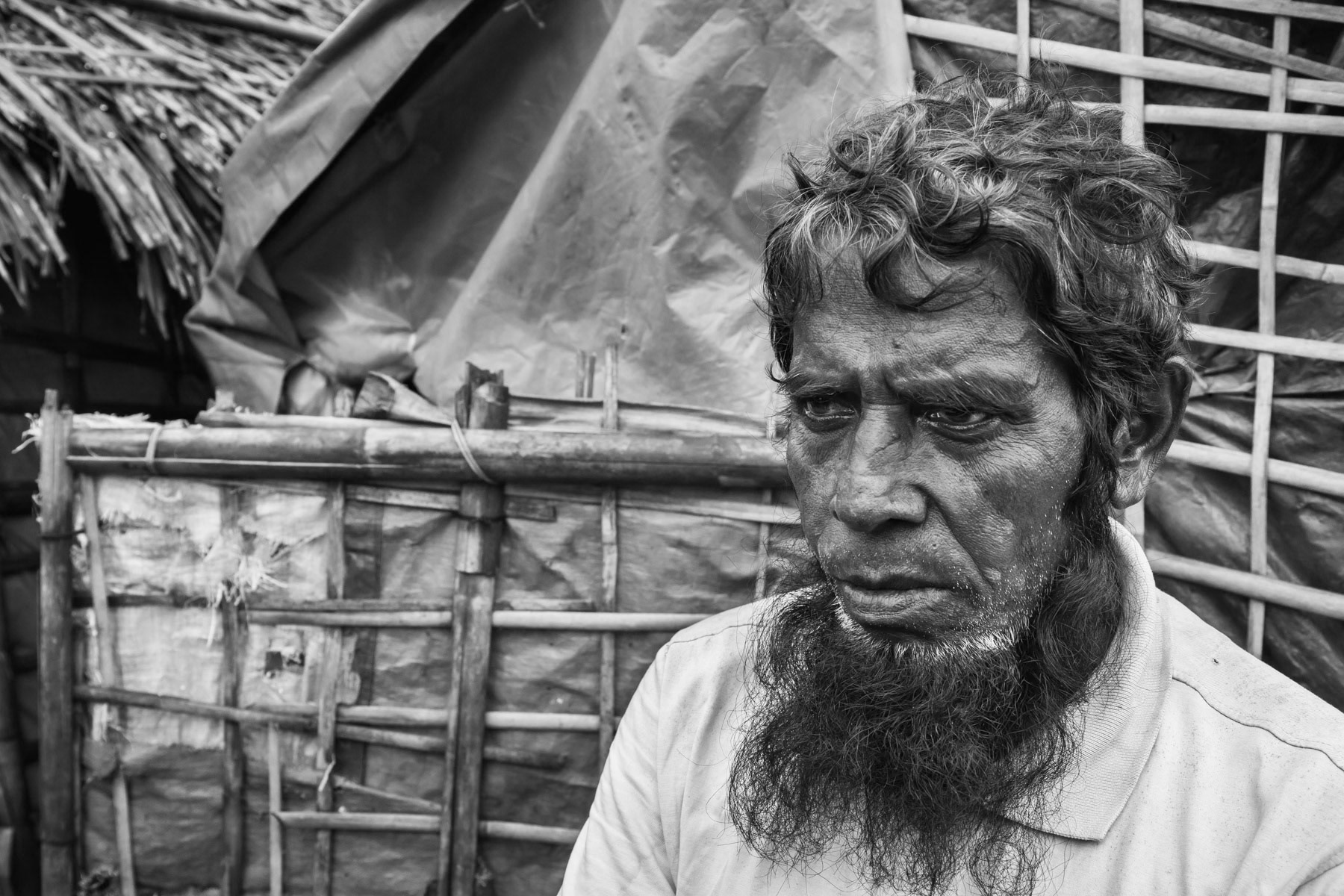
Rohingya displaced person entrapped in a concentration like camp where the population is not allowed to leave the camp. Dar Paing IDP camp, Sittwe, Myanmar, October 2016

Rohingya children, Khaung Doke Khar concentration camp for the Sittwe Rohingya population, Myanmar, September 2015

Access road to Kyin Ni Pyin, a place similar to a concentration camp for forcibly displaced Rohingya population who is not allowed to leave the camp area. Nearly 8,000 people have been living in dire conditions in this camp since 2012. Kyin Ni Pyin camp in Rakhine, Myanmar, May 2017

Rohingya family in their shelter waiting for better days. Dar Paing IDP camp, Sittwe township, Myanmar, May 2016
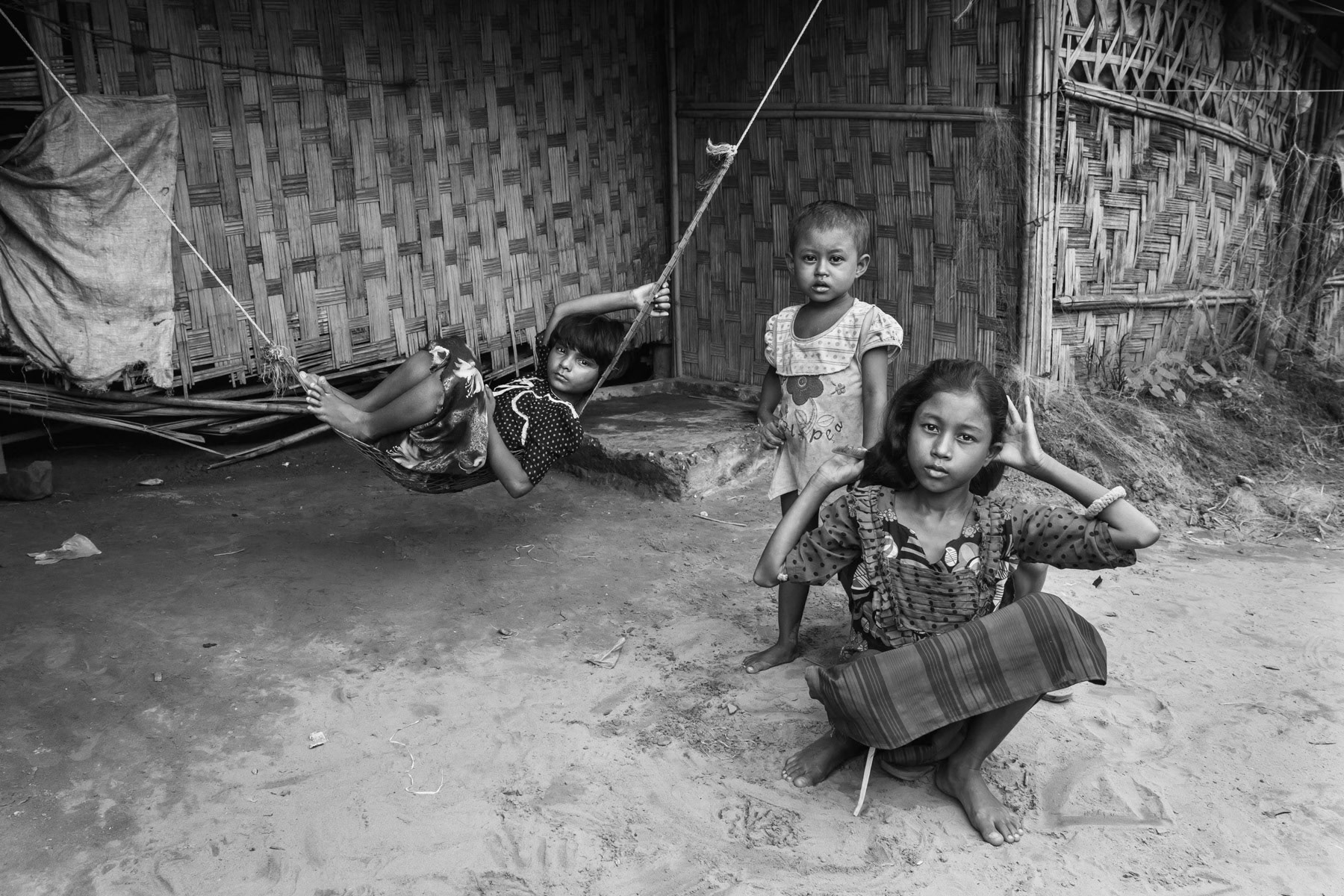
Ohn Taw Gyi IDP Camp for stateless Rohingy displaced following the 2012 inter ethnic violance. Sittwe township, Rakhine, Myanmar, May 2016
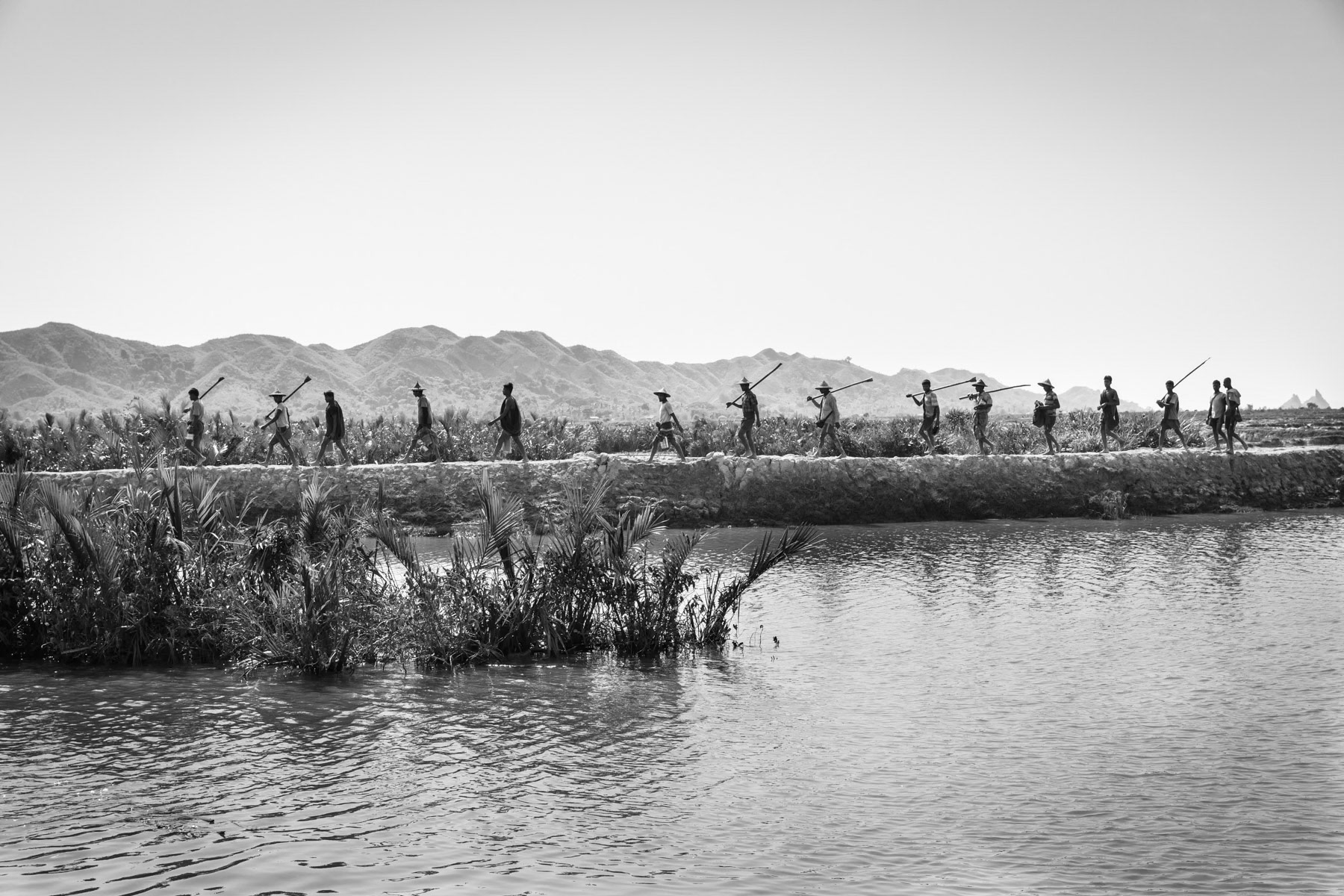
Rohingya villagers returning from the fields, Paktauw township in Rakhine, Myanmar, May 2017
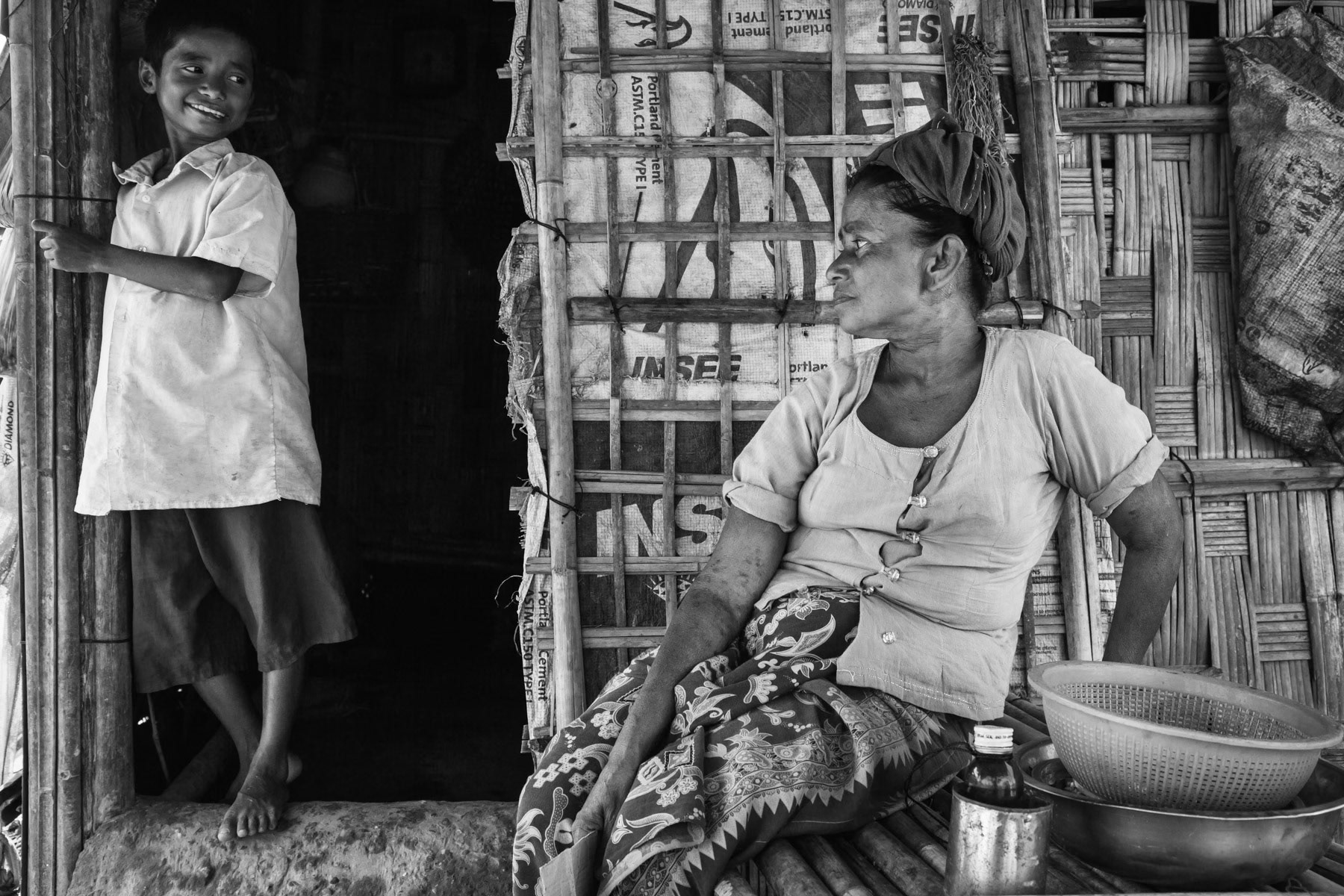
Motin Nya camp for displaced Rohingya following the 2012 etnic violance. Sittwe township, Rakhine, Myanmar, May 2016
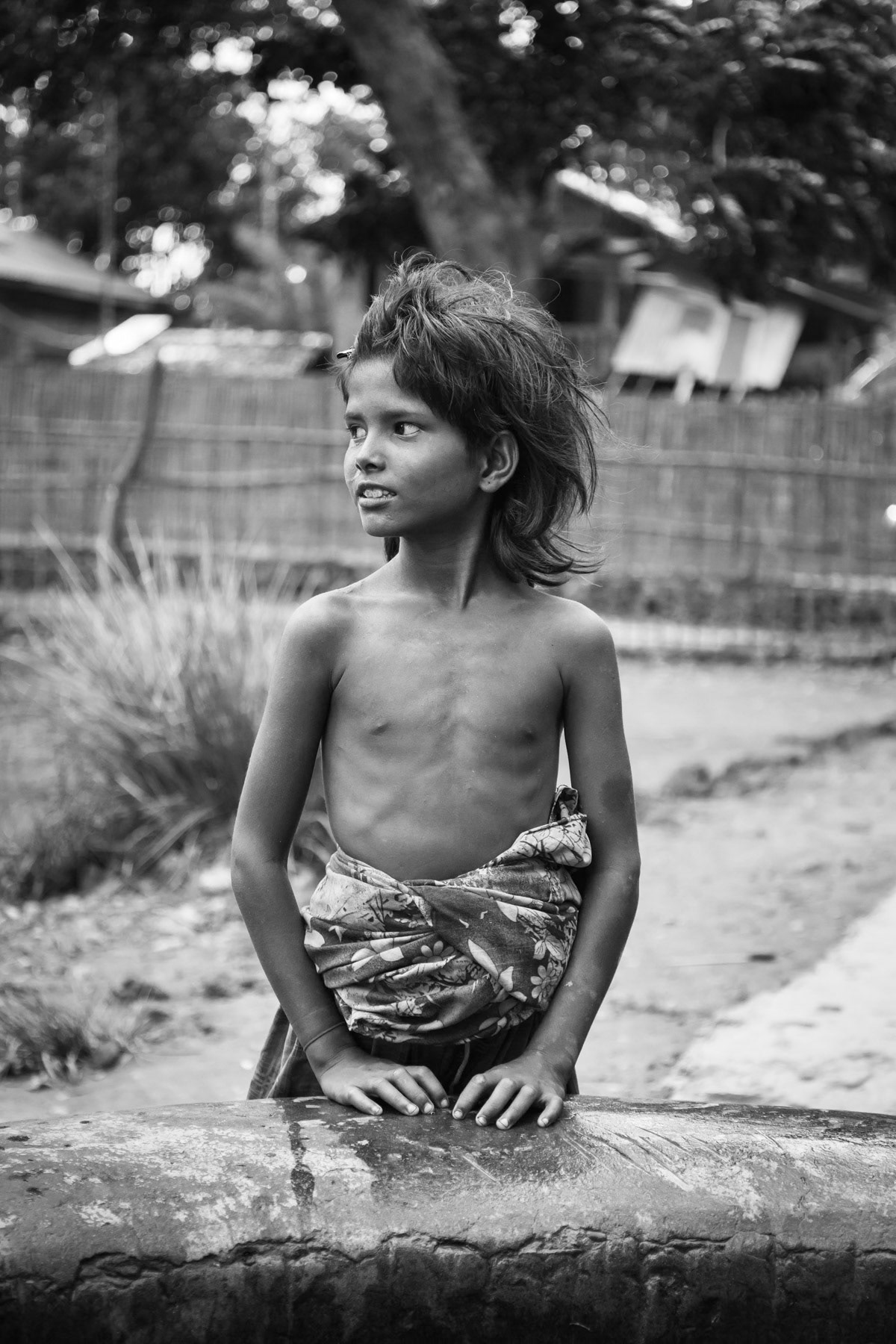
Rohingya girl at the deep water well. Paungdok village near Mrauk-Oo, Rakhine, Myanmar, May 2016
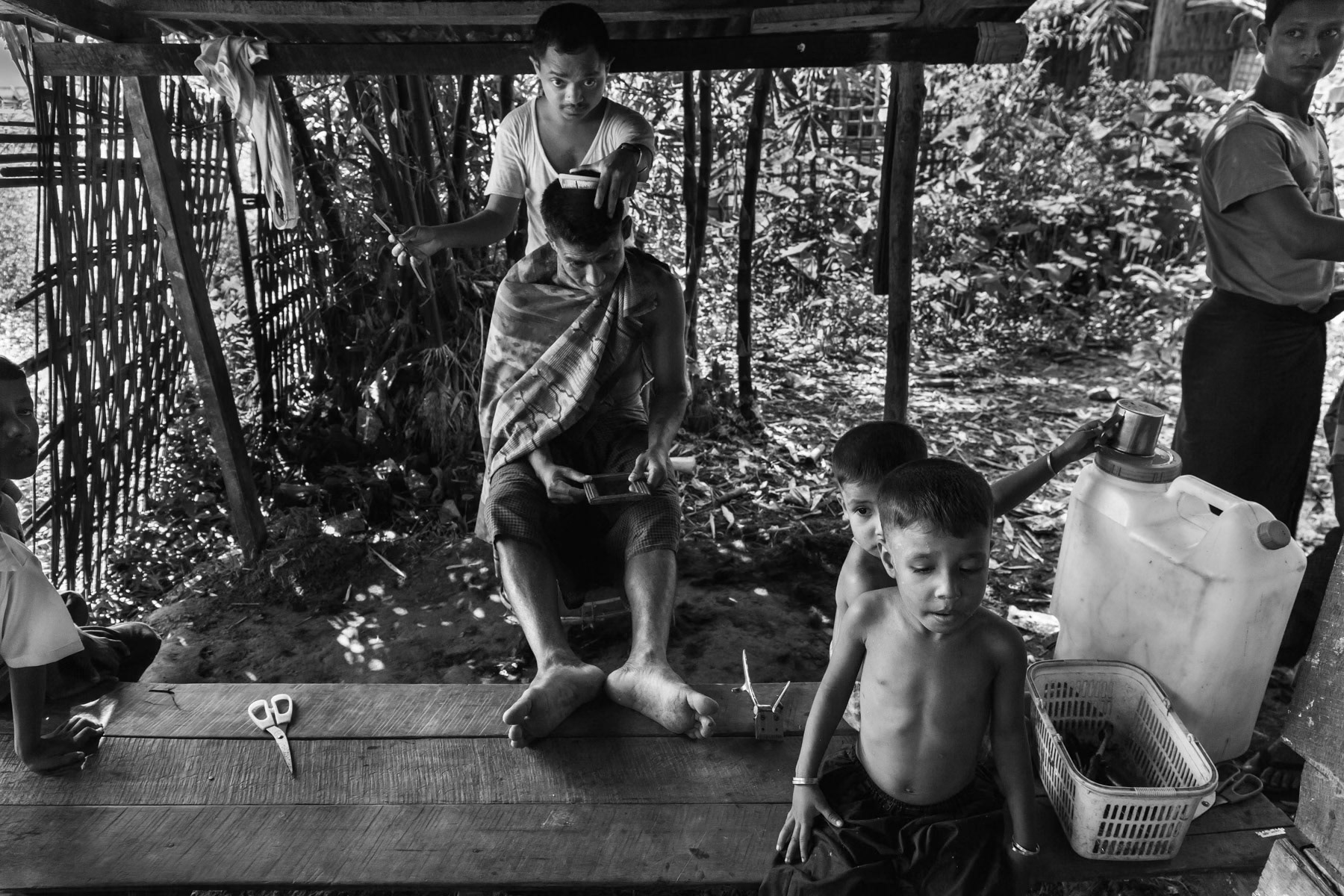
Barber shop in a Rohingya village, Rashimi, Sittwe township, Burma, October 2016
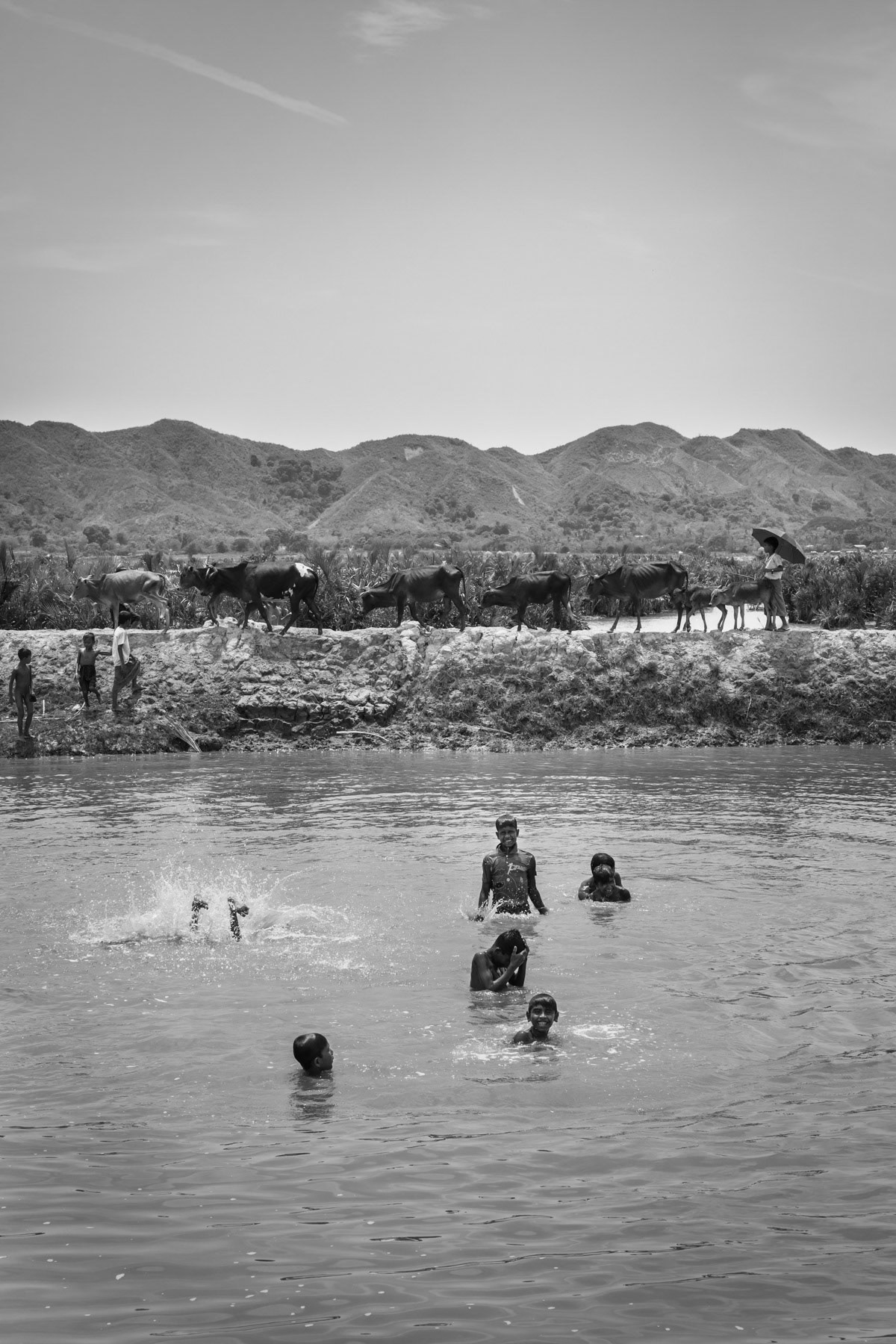
Rohingya children refreshing themselves in the river, Kyin Ni Pyin IDP Camp near Paktauw in Rakhine, Myanmar, May 2017
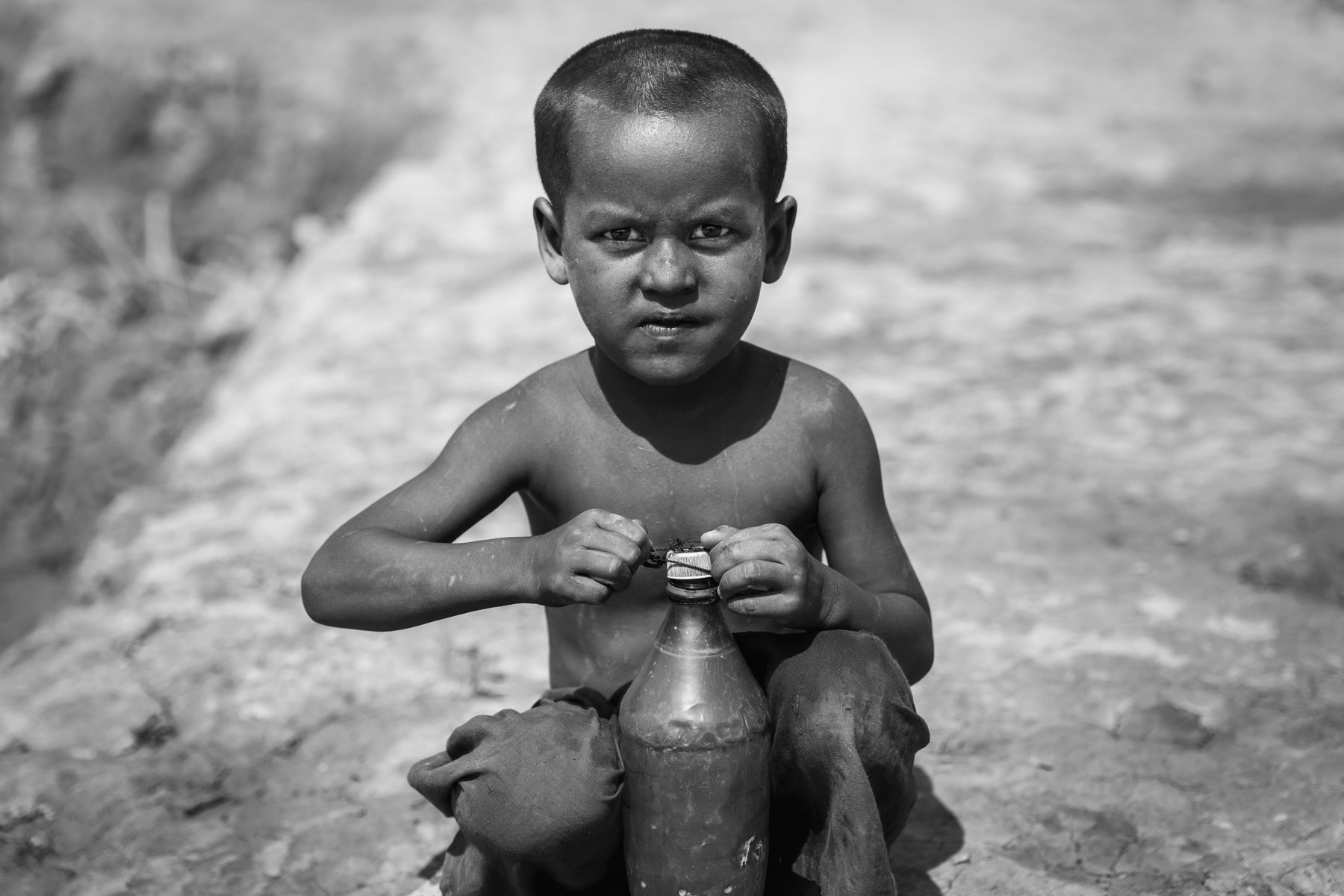
A Rohingya boy near the pond collecting the little water remaining, Kyin Ni Pyin IDP Camp, Rakhine, Myanmar, May 2017
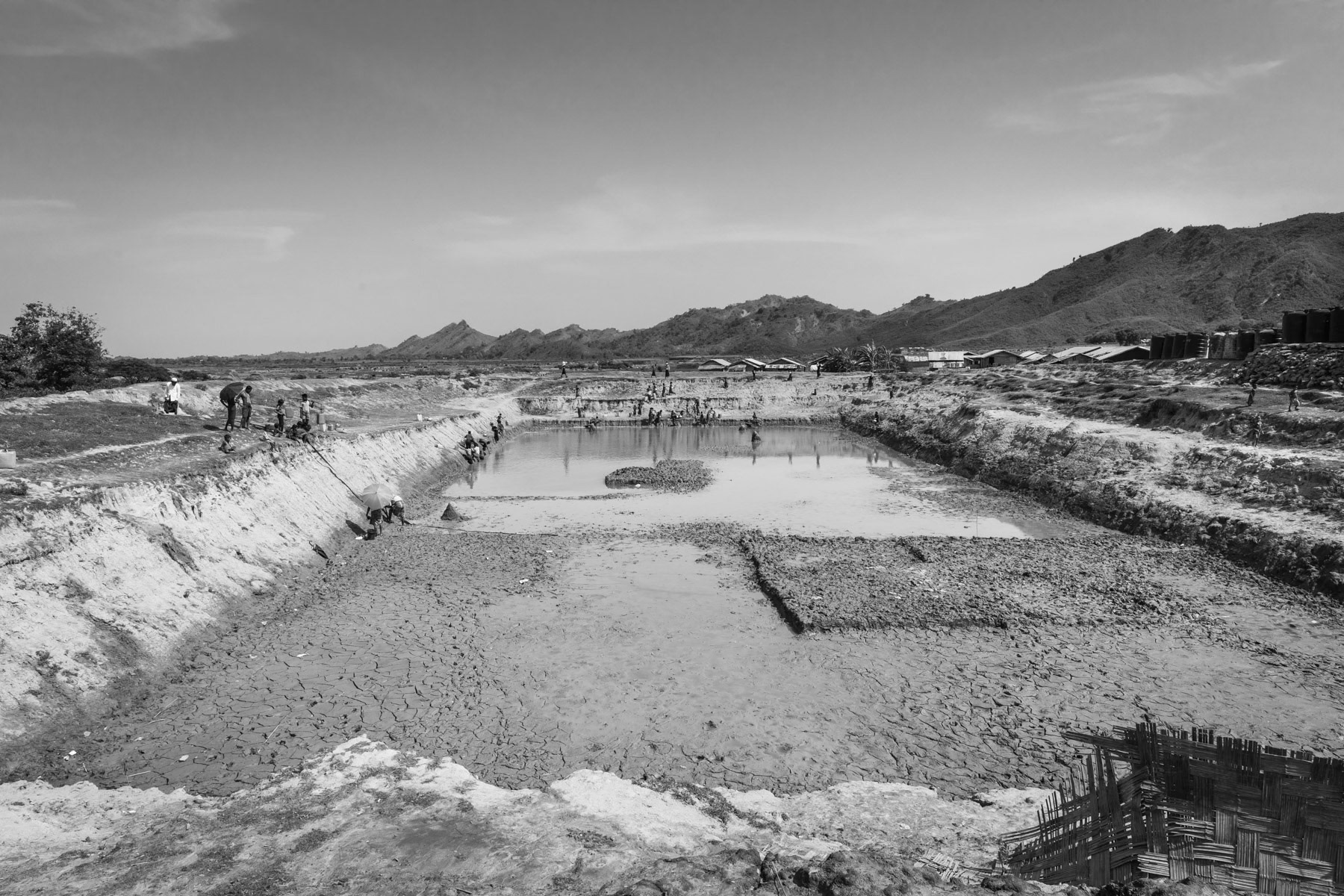
The last avaiable water at the end of the dry season, requiring infected pumped water from the river to provide drinking water. The pond is the only source of drinking water for the 8,000 strong camp population. No tube wells because the soil is too rocky. Acute shortages of water during dry season. The unclean water is causing high levels of diarrhea and a breeding ground for mosquito's causing malaria and dengue fever. The closest hospital is in Sittwe requiring a police permission to go to, and takes several hours by boat. Kyin Ni Pyin IDP Camp near Paktauw, Myanmar, May 2017
